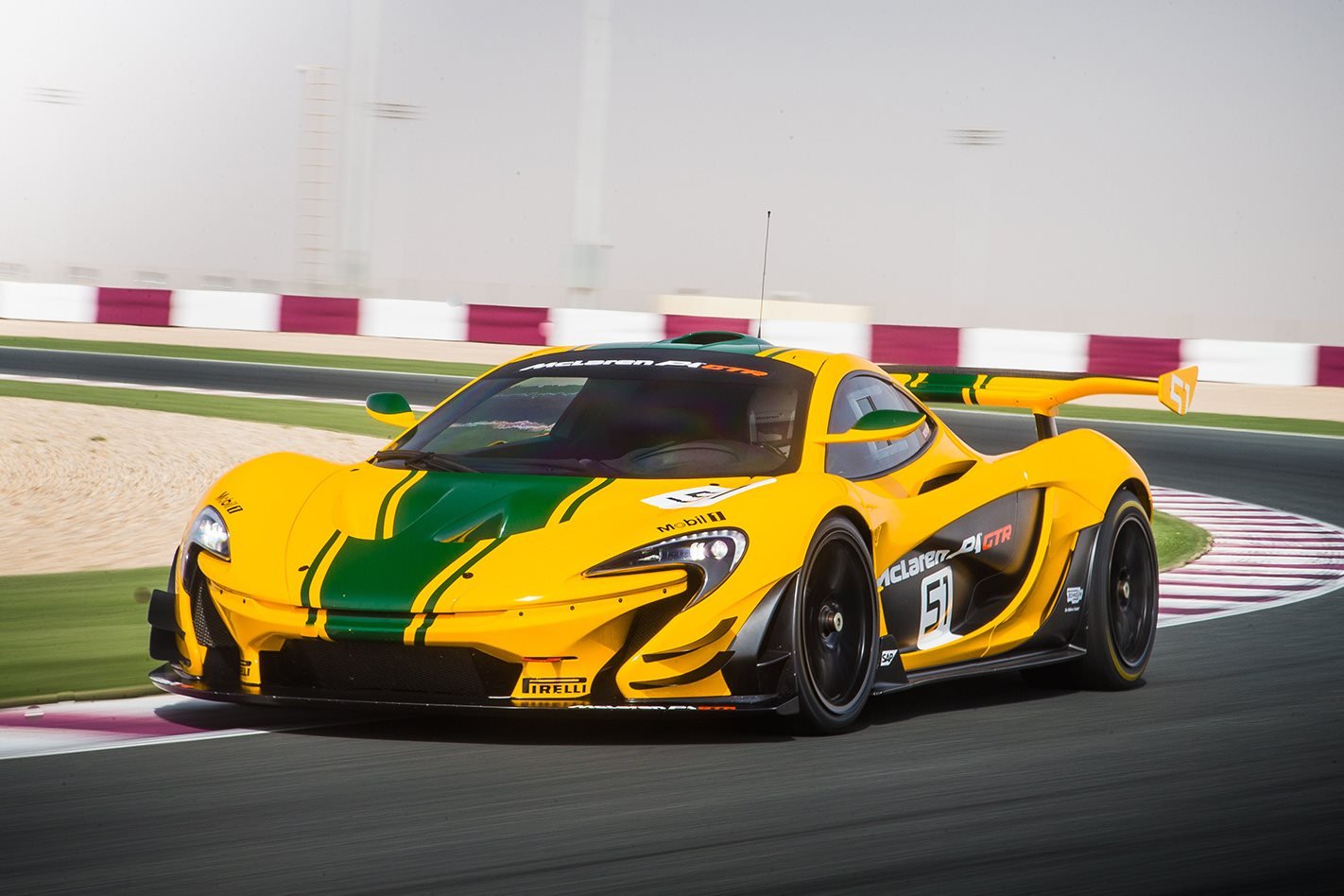Driving a McLaren P1 is not something those few lucky enough to have had the experience are likely to forget.
A powertrain with 673kW in a car weighing about the same as a family hatchback tends to leave its impression on you, as does a chassis capable of generating double the force of gravity through fast corners, where most road cars would get nowhere near even 1g.
And yet if the truth be known, and extraordinary as it sounds, the P1 is actually nothing like as fast as it could be. Its powertrain has not only to develop more than 670kW, but also pass all emissions tests in every country in which it is sold, and that costs a few kilowatts.
The active aerodynamics must be arranged so that they provide downforce when it’s needed, but don’t add to overall inefficient drag when it’s not, and that’s a compromise too. And those Pirelli tyres, vast and specially made for the P1 though they are, must also work in all weather conditions, provide reasonable ride quality and last for months or even years in normal use.

The McLaren P1 GTR is a P1 with no strings attached, save for the rather awkward fact that even at £1.98 million, or approximately AU$3.83 million (a standard P1 costs £866,000 or AU$1.67 million), McLaren has now shut the order book. It hoped it might sell up to 35 cars and stopped when requests passed 40 units.
Its engine now runs unrestricted all the way to 1000PS – which we call 736kW – its vast rear wing is fixed in the most aerodynamically-advantageous place and those treaded tyres have been replaced by race-specification slicks with a life expectancy measurable in hours or, if you’re really going hard, minutes.
This makes it quite possibly the most unhinged car based on a production design that has ever been created. And I have presented myself in my race suit at the Losail International Circuit just outside Doha in Qatar to drive it.
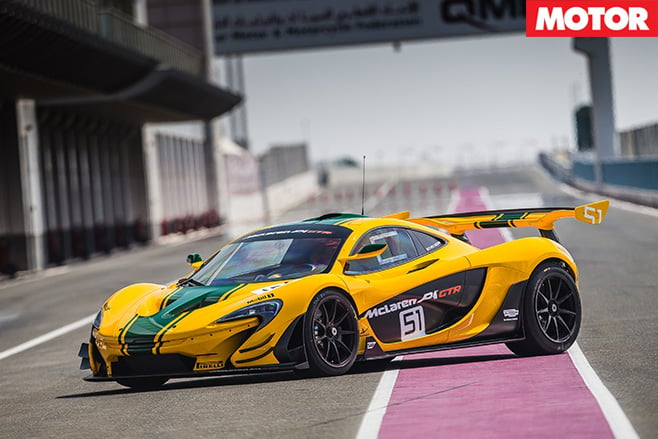
Like Ferrari, McLaren will organise events all over the world for P1 GTR owners to attend with their cars, where they will receive one-on-one driver training as well as advice about fitness, nutrition and anything else you might like to know about driving a car with capabilities outside the experience of all but full-time professional racing drivers.
But while McLaren will also look after your car for you, and transport it around the world, if you prefer to take it home and use it to make every single person at your local track-day venue feel entirely inadequate, you can do that too.

The interior is passingly familiar to those who’ve looked inside a P1, but with all the major buttons relocated to a steering wheel (based on that gripped by Lewis Hamilton as he powered to the 2008 F1 World Championship). There’s no roll-cage in here, as the carbonfibre monocoque is already far stronger than any mere steel cage could ever be.
You start it by pushing a button just as you would a P1, but from thereon in you are in an entirely different world. While a P1 will sit and idle quietly enough for those around you to carry on their conversations, when the GTR’s 3.8-litre V8 blasts into life your first inclination is to duck, your second to find somewhere to hide. And only then do you really focus on the fact you’re listening to an engine with 736kW, and it’s powering a car that’s even lighter than a P1.
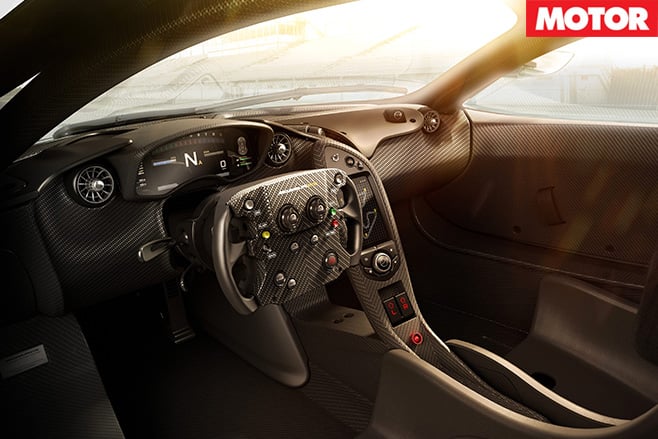
And the very first thing you learn from the P1 GTR is that above a certain level of performance, and particularly at low speeds, the power you feel is only that which can be transmitted by the tyre. So the P1 has 673kW, but under violent acceleration in the lower gears electronics have to intervene simply to stop the tyres boiling with wheelspin.
The GTR on its hot slicks has no such problems. It not only has more power, it can use it too. The acceleration doesn’t feel strong, so much as an act of violence committed against you. Instinctively you lift.
It’s the same in the corners and under braking. Driving the P1 GTR can actually be a very demoralising affair, a car whose primary purpose appears at first to be to remind you of your limitations as a driver. You push the car hard, yourself harder still, yet in its ability to shed speed far faster than you’d ever anticipated, and hit every apex without discernible over or understeer, it gives the impression of not being taxed at all.
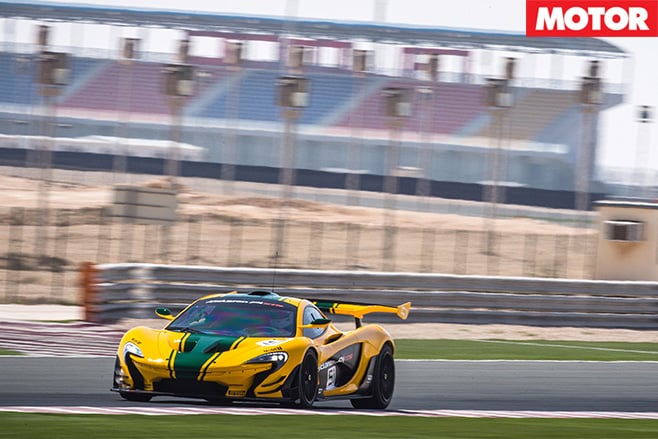
But then something curious happens. I can remember talking to an F1 driver who was brave enough to admit (off the record) that every spring when he climbed back in the car after the winter break, he quickly concluded all his talent had disappeared, the car was impossibly fast and he would never, ever be able to control it. ‘But,’ he told me, ‘by the end of the first day testing I’d be screaming at the engineers for more power and telling them I’d ridden mopeds with better performance.’ In short, you adapt.
After a short break to process the information force fed into my head, I had time to steel myself before getting back into the car with some knowledge of the experience to come. Now I was ready for it. So when the acceleration came I relished every scenery-shrinking, time-warping second of it.
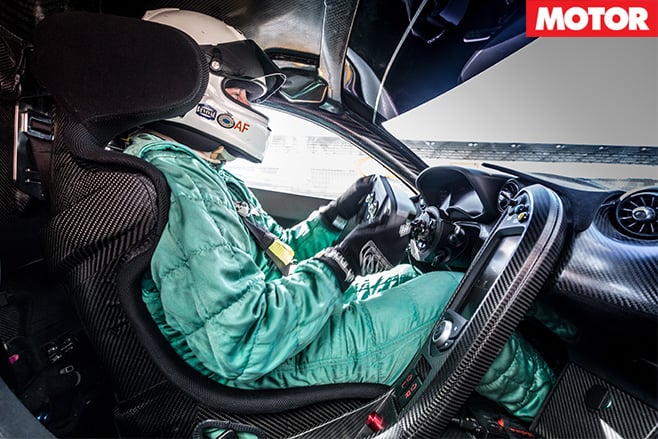
But there’s a problem, one I’ve found in every racing car I’ve driven capable of generating meaningful amounts of downforce. The faster you go, the more the air works to push the car into the tarmac, and the more grip is provided. As a result the car doesn’t feel less stable as speeds rise, but more so.
Indeed in fast corners taken at over 160km/h where the wing, splitter, bodywork and diffusers are doing their best work, the car feels a lot more precise than most cars do at less than half that speed. Simple physics will tell you there is a speed at which the car will not negotiate any given turn, but with the car feeling better and better as the speeds rise higher and higher, what happens when you reach that point?

The GTR is not like this. McLaren recognised from the start that it would be driven by owners of widely differing skill levels and that above all, above even the need for it to be faster than anything else they are likely to have driven, the GTR needed to be friendly and even indulgent on the limit. It’s a fast car, but it needed to be fun too.
And it is: when finally you feel the front tyres first start to slip, the signal is communicated so beautifully clearly through the steering you find yourself not being scared by the news, but actually relieved. You realise you are in fact good enough to work this car hard, and when you do, it’s not going to try to mug you.
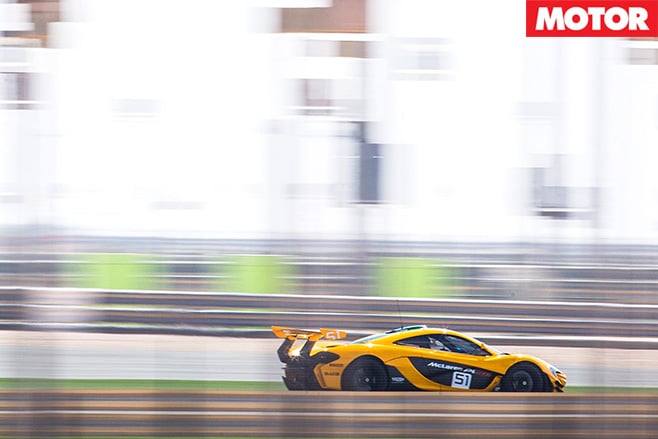
And, if you do apply a little more power than usual quite early in the corner and feel the back step out, instead of backing off and trying to save yourself, the car gives you the confidence to ride it out, correcting with the steering while keeping the taps open.
Only the brakes required more time than I had. Because of the downforce, you can hit the left-hand pedal at 305km/h with all the force your thigh can muster and you won’t be able to trigger the ABS.
Instead your effective body mass will triple under the G-force, but then you must remember that as the car sheds speed, so too does it shed downforce, so the deeper into the corner you go, you actually have to reduce brake pressure. It’s not actually an inherently difficult technique, but it is different and takes time to learn.

Indeed by the end the power becomes merely a means to get you to the speed at which the GTR can show you what it’s really good at: namely cornering so hard you wonder how your head is staying on your shoulders, and slowing like you’d driven into a vat of treacle. In my experience no car based on a road car design has ever had a performance envelope like it.
Of course the McLaren P1 GTR will be seen as an irrelevance to all but those immensely wealthy 40-something individuals who have ordered one. But as a device to show, in the most stark way imaginable, just what can be achieved when one of the fastest road cars ever built is released from its duties to comply with international legislation, it’s not just thrilling, but fascinating.
5 out of 5 stars
Specs: McLaren P1 GTR Body: 2-door, 2-seat coupe Drive: rear-wheel Engine: 3799cc V8, DOHC, 32v, twin-turbo; electric motor Bore/stroke: 93.0 x 69.9mm Ice power: 589kW @ 7300rpm Electric power: 147kW Combined outputs: 736kW/900Nm+ 0-100KM/H: 2.8sec (claimed) Transmission: 7-speed dual-clutch Weight: 1440kg Suspension: A-arms, coil springs, hydraulically-linked dampers (f/r) L/W/H: 4588/1946/1138mm Wheelbase: 2670mm Tracks: 1738/1604mm Brakes: 390mm ventilated carbon-ceramic discs (f); 380mm ventilated carbon-ceramic discs (r); caliper data unavailable Wheels: 19 x 10.5-inch (f); 19 x 13.0-inch (r) Tyres: 285/650 R19 (f); 325/705 R19 (r) Pirelli slicks Price: Sold out

